Sisseton Wahpeton College: Preserving the past, preparing for the future
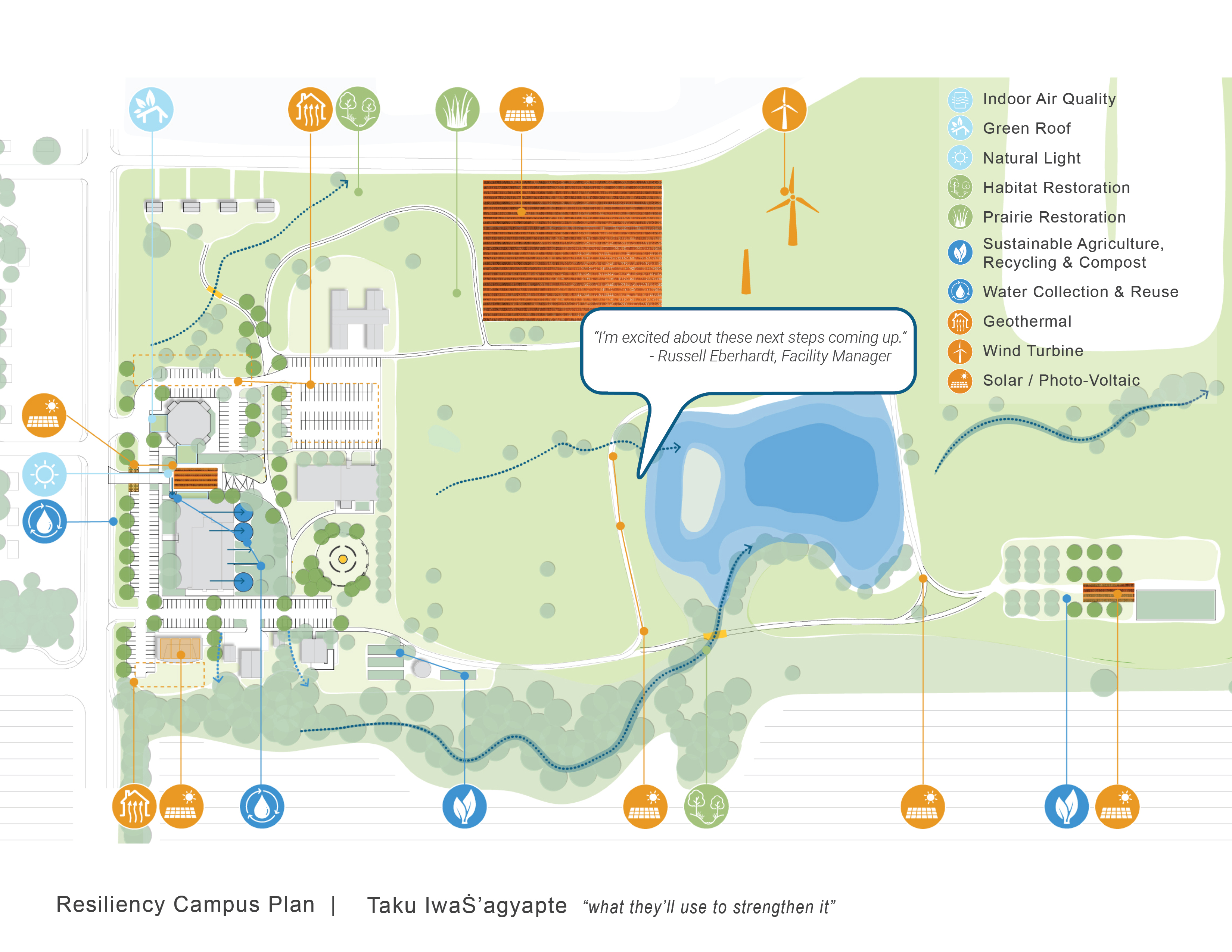
Wi’wavyake Oyakapi Ehavna wiconi uv hdu hapi, yawiyeya tokatakiya Uvyapi.
“Preserving the past, preparing for the future”
- Sisseton Wahpeton College Vision Statement.
Witnessing the effects of climate change on the region and its disproportionate toll on many indigenous communities, South Dakota’s Sisseton Wahpeton Oyate members of the Lake Traverse Reservation worked with Cuningham to create for their school — Sisseton Wahpeton College — a resiliency plan focused on health and wellness, place and habitat, and an off-grid sustainable campus that thrives as its community moves toward the future.
Implementing environmental strategies and equity measures toward climate neutrality and social community needs will positively impact the campus environment, well-being and financial health, allowing the college to expand educational offerings and ensure cultural legacy preservation for future generations.
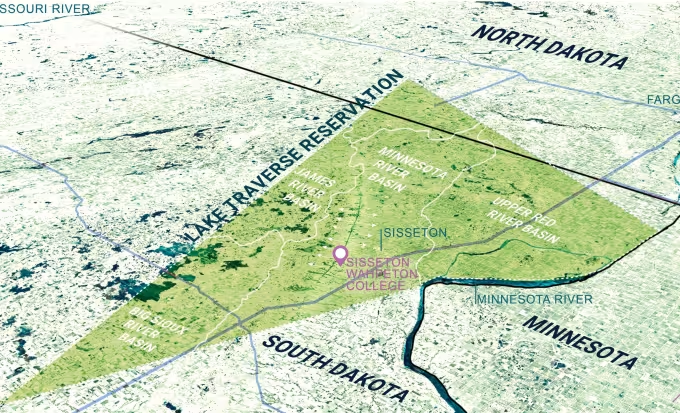
A changing landscape
Sisseton Wahpeton College is one of thirty-seven tribal institutions throughout the United States. The campus is located on approximately seventy acres of land in the Lake Traverse Reservation in South Dakota’s Northeast region. This area was once covered with native prairies, wetlands, streams, and dense riparian forests. Now, the vast portion of the land has been replaced with agricultural farmland and speckled wetlands. The constant agricultural runoff over decades of wasteful farming practices has created major pollution of waterways downstream, as well as the depletion of nutrients in the soils. The process of restoring this land back to its native state is part of a greater environmental and resiliency need to positively impact the Minnesota river’s watershed and the surrounding Native American community.
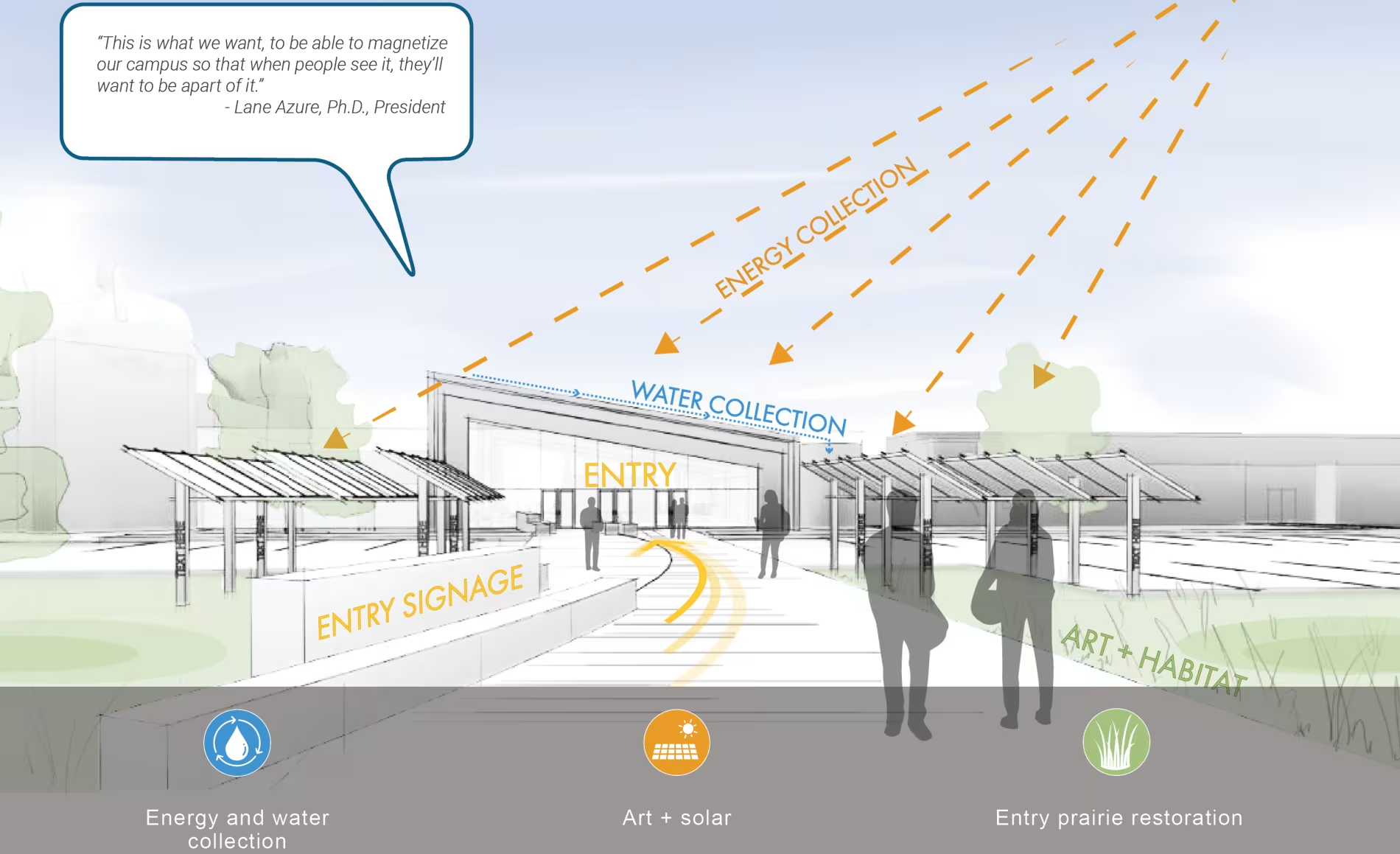
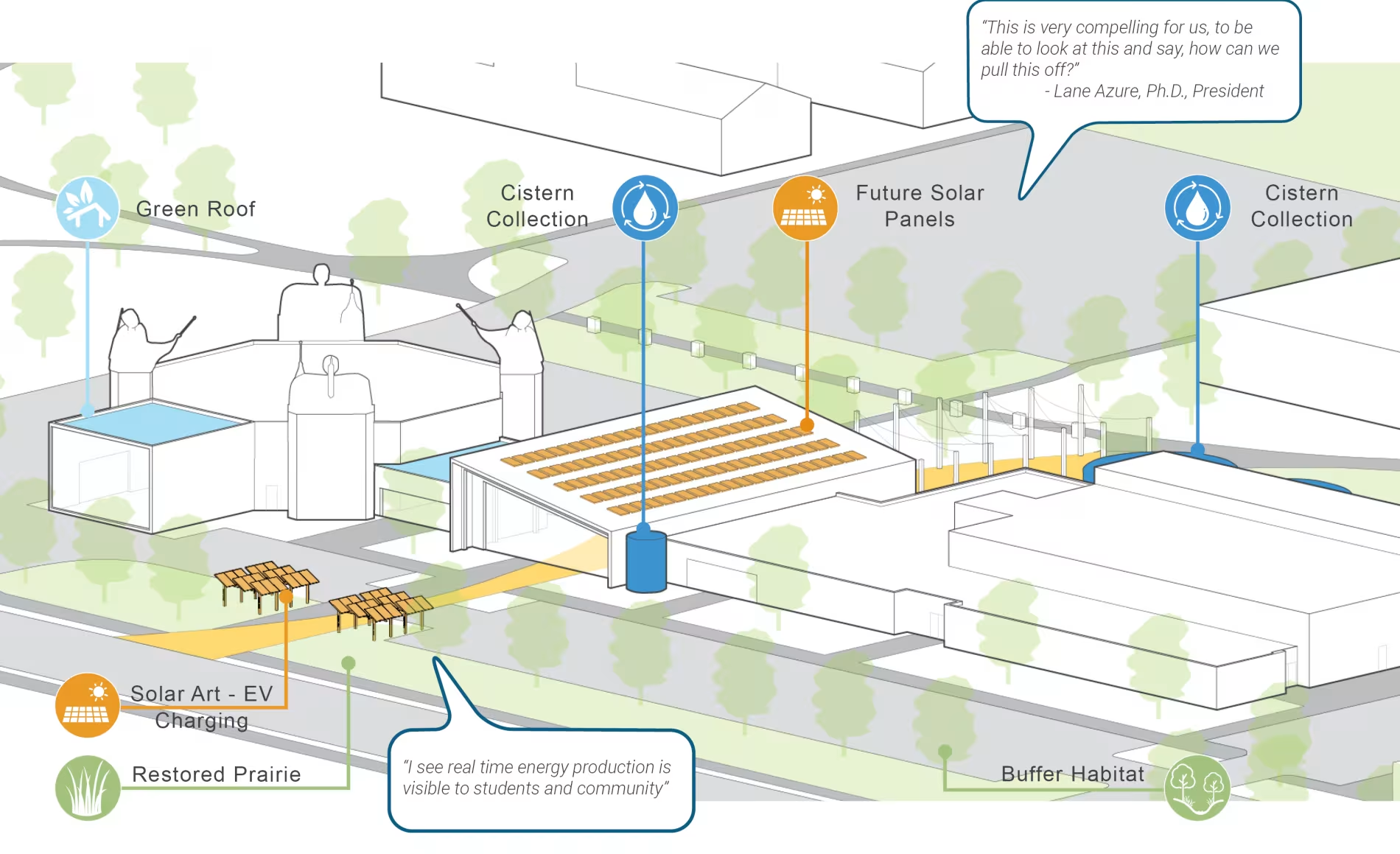
A resiliency tool kit
The resiliency plan focuses on environmental strategies that guide the campus’ future toward climate neutrality and positively impact the regional environment. Health, place, habitat, and energy are the prioritized strategies, driving the creation of regenerative measures followed by the development of a resiliency tool kit ensuring implementation of such measures were understood and followed.
The resiliency tool kit is organized into five categories:
- Carbon and Sequestering,
- Habitat and Vegetated Buffer
- Energy: Solar and Wind
- Health and Wellness
- Water Collection and Reuse.
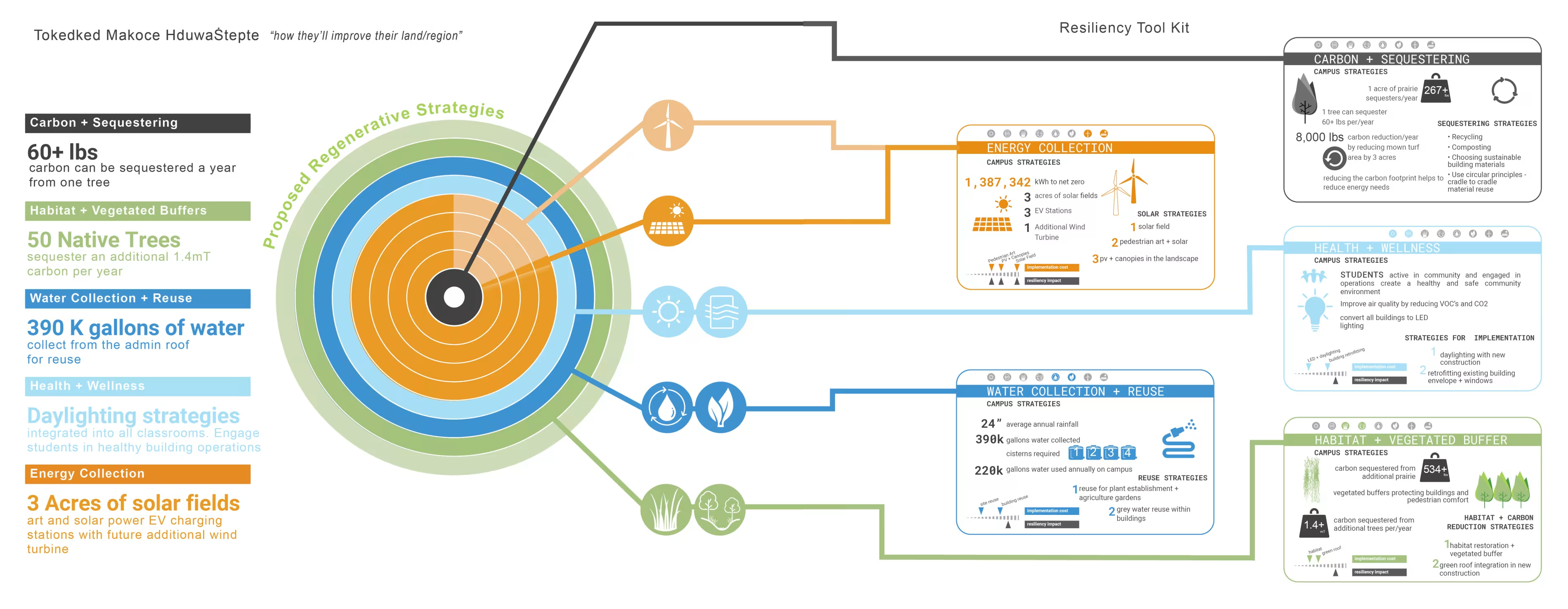
To date, the college has restored 30 acres of native prairie, incorporated wind power, geo-thermal wells serving three buildings, and minimal solar power on site. Conducting an in-depth analysis helped arrive at offsetting strategies recommended by the tool kit including: retrofitting existing structures, implementing site techniques, and reducing energy resources. Another measure included rainwater collection through cisterns. Currently, the campus uses 220,000 gallons of water annually. This could be offset by collecting rainwater from one building alone, equating to 390,000 gallons of water a year.
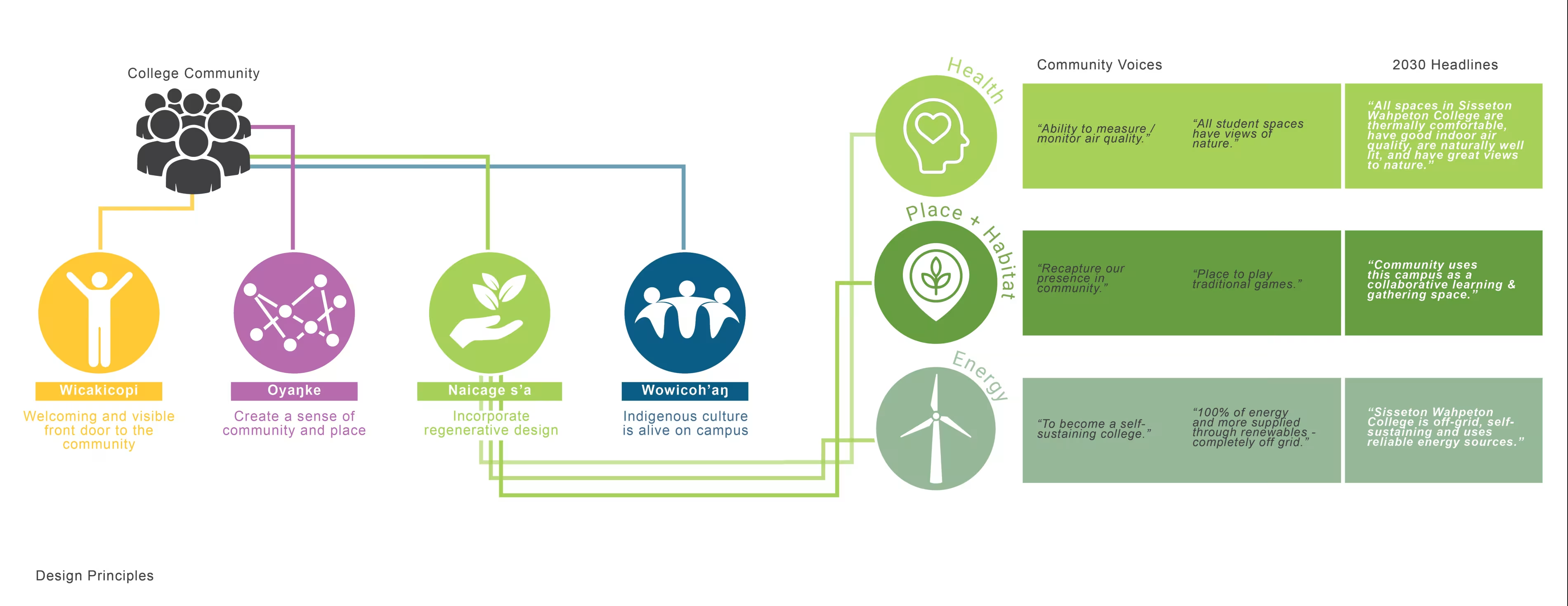
To aid in implementing these design principles, the design team followed with strategic guidance including logistic phasing, associated costs, and expected duration of each project. The college is now in an initial step to pursue necessary documentation to implement the first phase of the resiliency plan.